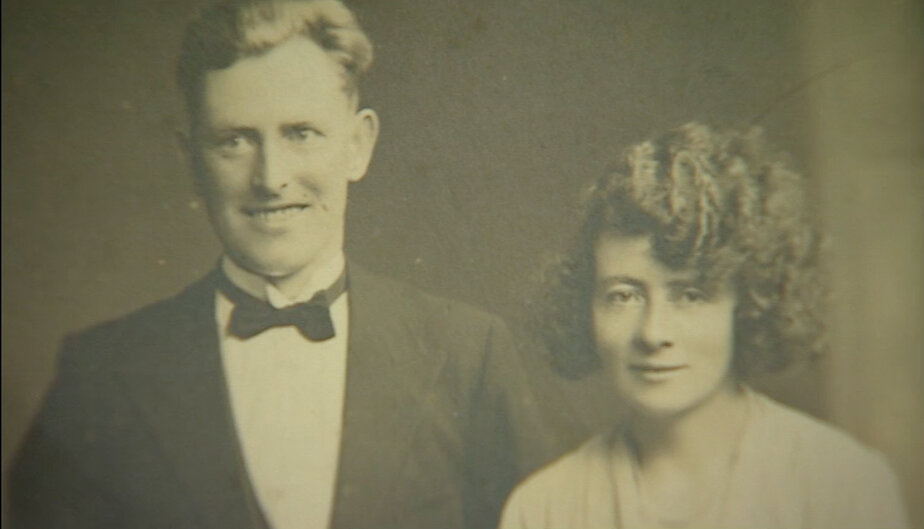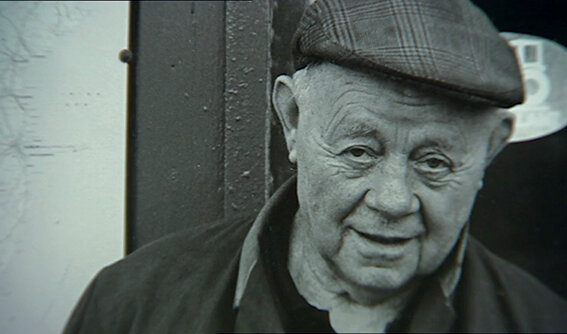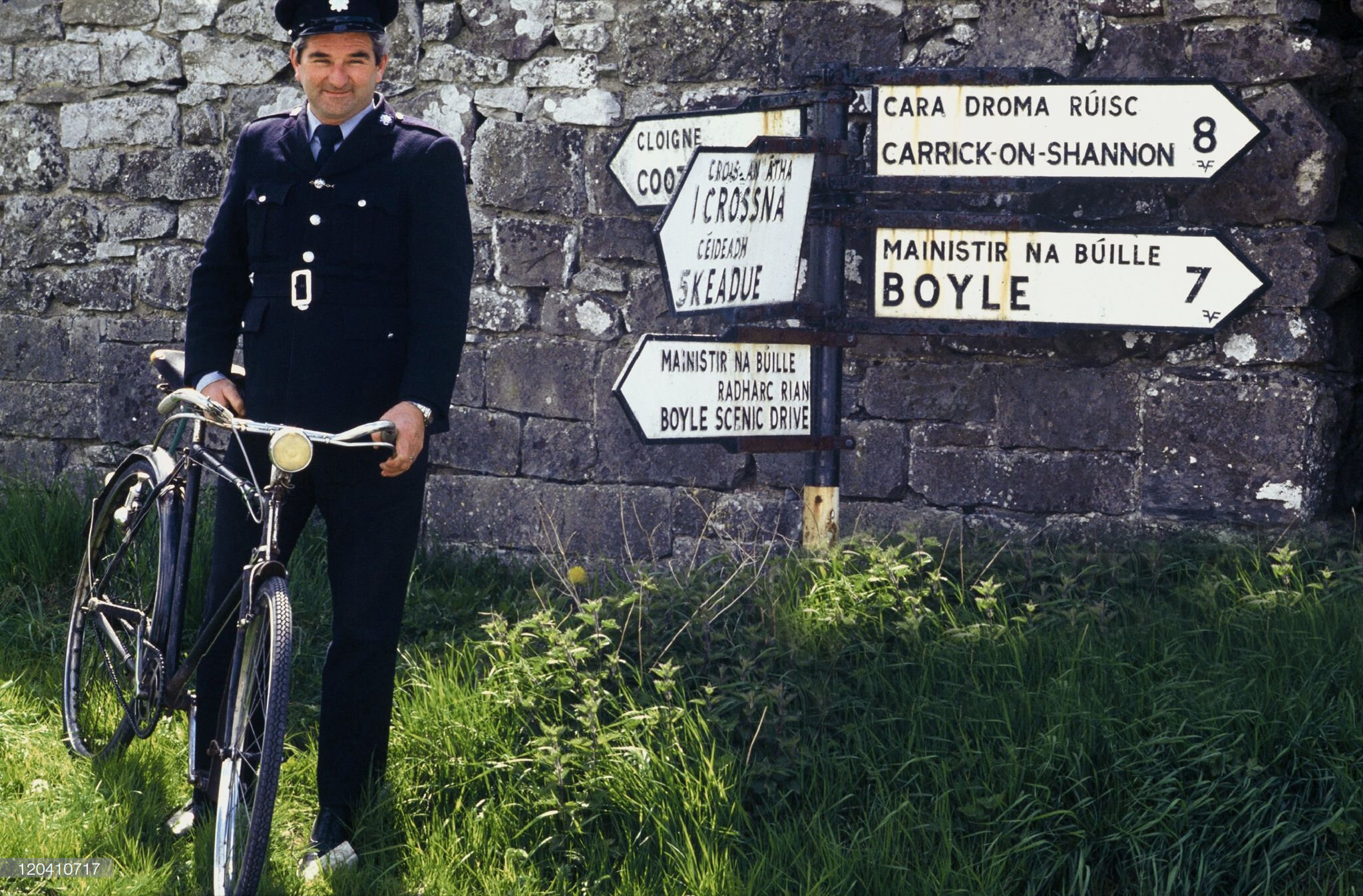The John McGahern Barracks is operated by a local voluntary community group.
ADVANCED BOOKING IS ESSENTIAL - 48 HOURS NOTICE REQUIRED
For Bookings : info@mcgahernbarracks.ie
John McGahern Barracks, Cootehall, County Roscommon Eircode F52 YD92
Our friend Martin Parr passed away on 6th December 2025. Our condolences to his wife Susie and their family. RIP Martin,
Internationally acclaimed and award winning documentary photographer Martin Parr is interviewed by Tom Inglis in the McGahern Barracks Museum in Cootehall, Co. Roscommon. Martin has generously donated 16 of his prints for his first ever permanent exhibition at the Museum. The interview is available via this link to our Youtube channel here
The Barracks is unique: there is no other building in Ireland which has been written about so much with such emotional intensity.
The exhibition is an introduction, particularly for those not so familiar with his work, to the life and times of McGahern, rural policing and village life in Cootehall at the time.
We hope, in the future, given funding and support, to celebrate this unique building by holding webinars, seminars, workshops, and hopefully, summer schools in the life and work of John McGahern.

‘Everything interesting begins with one person and one place’.
JOHN McGAHERN
The Exhibition
The barracks has a unique place in Irish history. Through the writings of John McGahern, it has become one of the best-known houses in Ireland. Through his writings, particularly The Barracks (1963) and Memoir (2004) we gain an insight into family life, the life of policemen, and everyday life in and around the village of Cootehall in the middle of the last century.
Using quotations from his writings along with photos, a documentary video of McGahern, sound recordings and a variety of artefacts from the middle of the last century, the exhibition tells the story of how a young boy went on to become one of Ireland’s most famous writers.
John McGahern:
Life & Works
John McGahern was born in 1934 in the countryside outside of Ballinamore. For his first ten years, he lived with his mother and his four sisters and brother. He was the eldest. His mother was a primary school teacher and part-time farmer. His father, who was a Sergeant stationed at the barracks, only visited his wife and children during the two days leave he had each month. However, the family came to live with him in the barracks during the summer holidays. After his mother died in 1944, John and his sisters and brother came to live with their father in the barracks.
For a long time, McGahern was committed to fulfilling his mother’s dream of him being a priest. But the more he read, the more he thought about writing. And then, one day, there was an epiphany:
‘Over many days and months, gradually, a fantastical idea formed. Why take on a single life – a priest, a soldier, teacher, doctor, airman – if a writer could create all these people far more vividly? In that one life of the mind, the writer could live many lives and all of life’. (Memoir, p.204-5).
John McGahern’s international reputation is founded on his detailed descriptions of the changes that took place in Ireland, particularly rural Ireland, during the latter half of the twentieth century. Many of his writings capture the people, their everyday life, cares and concerns, and the landscape of Leitrim and Roscommon in which he grew up and lived most of his life.
His first three novels, The Barracks, The Dark and The Leavetaking are fictional descriptions of his time living in the Barracks. His Memoir written in the years before he died, reveals the thin line that divided these novels from his personal experiences.
The Pornographer (1979) is, among other things, a description of the division between rural and urban life, between a culture of family, marriage and self-denial and a cosmopolitan culture of individual freedom and the pursuit of pleasure.
Amongst Women (1990) increased his international reputation. It won many awards and was short-listed for the Booker Prize. It describes the steady, relentless collapse of an old-world order over which the Moran, the patriarchal father, presided.
His last novel, That they may face the rising sun (2002) is a homage to rural life in Ireland. It was a vivid description of people, the lake around which they lived, their local towns and villages, and the challenges, vagaries and beauties of everyday life.
His final book Memoir retraces many of the people and events about which he wrote in his novels and short stories. It reaffirms many of the things that was already known from his works of fiction: his love for people and place and, in particular, his mother.
McGahern was also admired for his short stories. These were brought together in two collections Collected Stories (1992) and Creatures of the Earth (1992). Most of the stories take up the same themes as in his novels, the emotional connections and fraught relationships between men and women, parents and children, and the divide between secular urban and religious rural life.
Having lived in London, for many years, he returned to live in Ireland in 1972, first in Cleggan in County Galway and then to a cottage and small farm near Fenagh in County Leitrim where he lived with his wife Madeleine. He died in 2006.
The Barracks
The barracks was established about 1840. It was part of the new system of policing that began to spread across Ireland in the 19th century. The aim was to bring law and order to a country that was seen to be beset by rebel groups, fighting, stealing, drinking and other forms of lawlessness. Francis McGahern, John’s father was the sergeant from 1937 to 1958. He was required to live on the premises and was assisted by three gardaí. The office was referred to as the Day room. There was a separate entrance from the back of the building. There was a cell (now a toilet) which, it would seem, was rarely used except to help those who were a bit drunk, and perhaps disorderly, to sober up. Although the sergeant slept upstairs, the other gardaí took turns to sleep, on a camp bed, in the Day Room each night. The most important item in the Day Room was the phone. It always had to be in hearing distance in case it rang which it rarely did during the 1940s and 50s.
It was in the barracks that John McGahern developed a love of reading and learning. He gained scholarships, first to go to secondary school and then to train as a schoolteacher. He said that it was in the barracks that he wrote his first stories, helping the gardaí write fictional reports about patrols they had not undertaken. They were called ‘patrols of the imagination.’
The barracks stopped being a family home in 1999 and a police station in 2012. Shortly after it closed some local people formed the Cootehall Community Development Group. The aim was to bring the barracks back to life as a place that could be used by villagers but would also tell the story of John McGahern, the village and some of the history of local policing in Ireland. The playground and carpark were developed in 2014 and, in 2018, work began on a full renovation of the building.
Cootehall Village
The village of Cootehall was a different place back in McGahern’s time. While the population was similar to today, fewer people lived in the actual village and far more lived in the hinterland. As McGahern details in The Barracks and other writings, life revolved around domestic chores, cooking, washing, cleaning, fetching and carrying, doing repairs, tending to hens and cattle, growing vegetables and, in summer, cutting turf.
The village was the centre of the world for most people.
The village of Cootehall was scattered randomly about a big triangular field, Henry’s field. No two shops or houses adjoined one another, and they were set down as haphazardly as if they had been carried there on various breezes. There was a church, a post office, the barracks, a presbytery, two shops, three bars, a few houses (Memoir, p. 25).
The roads in and out of the village were full of potholes. There were some cars, vans and tractors and there was a hackney business that was mainly used to bring people to and from the local towns.
McGahern and his sisters walked a mile and a half to school: it wasn’t considered far. For most people, the main form of transport was a bicycle or donkey and cart. Electricity did not arrive until 1956. There was little entertainment other than what people created for themselves through music or playing sport or, mainly for men, going to the pub. There was no television and few radios. There was plenty of food, but it was plain with a concentration on bread, milk and potatoes. Meat was a treat, and it was mostly bacon.
As on the big match days, my father was in great humour on the day the pig was killed. In the evening I was sent around neighbouring houses with the parts they wouldn’t cure – ribs, cutlets from the bones, liver – and the neighbours in their turn gave back this bounty when they killed their own pig. I remember most the piercing screams, the blood gathered in a white enamel basin for black pudding, and the sweet taste of the fresh cutlets that were called grisceens. (Memoir, p.165).
How To Find Us
Cootehall is equidistant from Carrick on Shannon and Boyle. The village lies 4kms from the N4 and the Barracks itself is located immediately on the left, adjacent the park, after crossing Cootehall bridge. For SatNav, use Eircode F52 YD92.



































